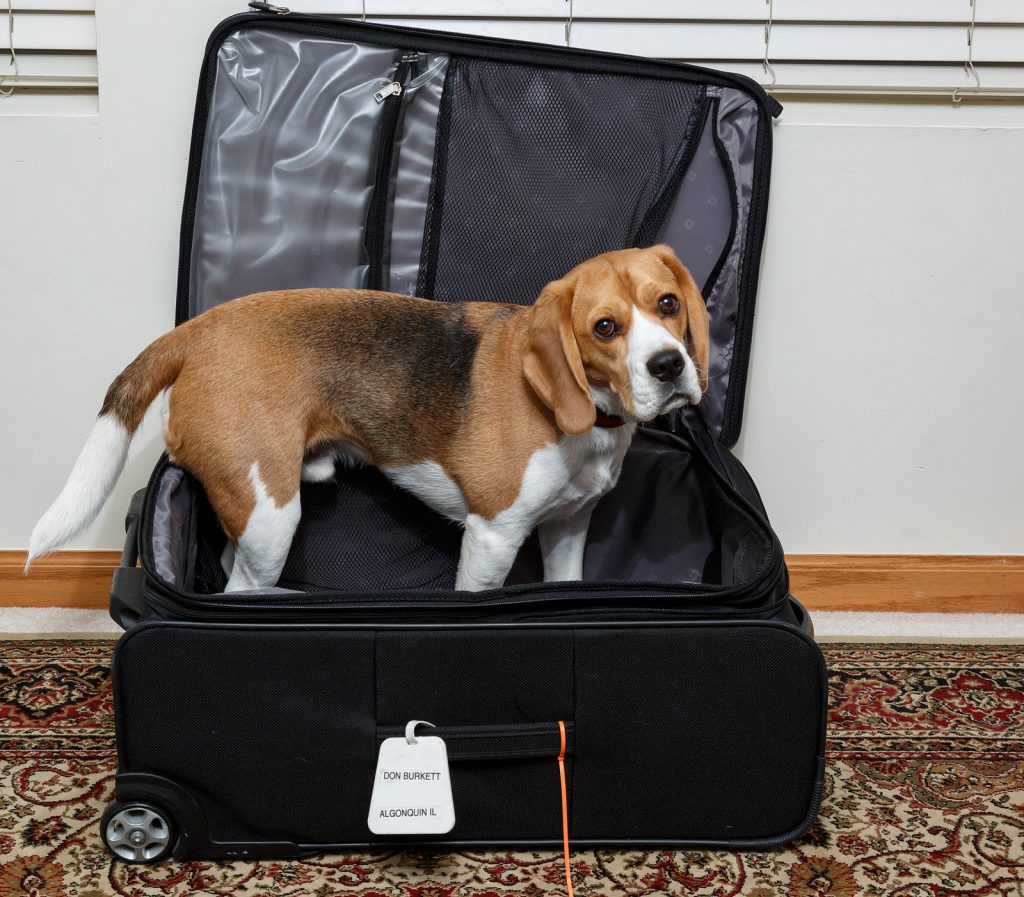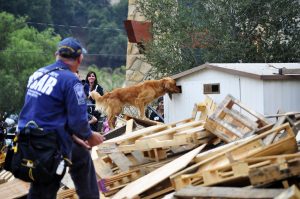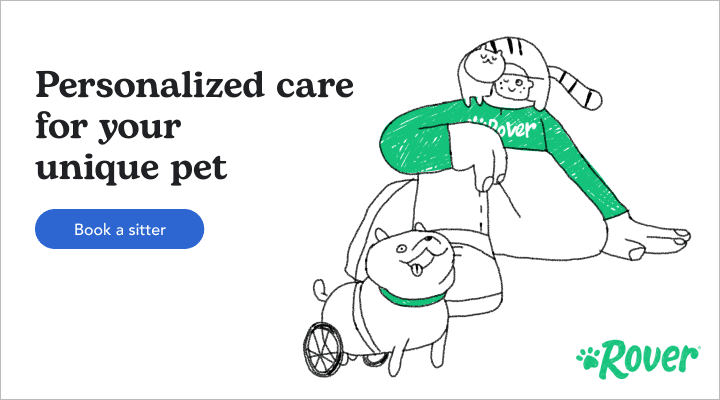We weathered Y2K and escaped the Mayan calendar scare of 2012, but these shouldn’t be the only occasions we panic—or better yet, plan—around disaster possibilities. With a four-legged friend counting on your contingency plan, a good disaster plan is an imperative.
Disaster Preparedness for Pet Parents
Hoping for the best, prepared for the worst, and unsurprised by anything in between.
– Maya Angelou
Thankfully, with advance preparation we can face a future emergency with confidence. Whether the earth is shaking, water is overflowing, or wind is rattling the windows, real love is demonstrated by considering our canine’s disaster readiness ahead of time.
1. Make a go-bag
Pet readiness isn’t that different from recommendations for our human friends. Putting together a “go-bag” is project number one. Three to five days of self-sustaining food and water are the minimum recommendations, and medication (which might be harder to find in days to come) should be at least seven days’ worth. Make sure directions for dosage are included just in case you and your dog are separated, all kept in an airtight bag with vet records of vaccinations and medical history.
This disaster-ready bag should have a first-aid kit (great details here), plastic bags for poop, an extra leash or harness, a food and water dish, and throw in a favorite toy for good measure. It’s also wise to have an extra dog tag with up-to-date info (and this assumes the one on their collar is kept current too).
Your human go-bag should include a current photo of your dog, in case the chaos causes a separation. This possibility should also prompt you to get your four-legged survivor micro-chipped, and keep a physical record of the chip number just in case your personal electronics are lost or damaged. That way—even if your dog doesn’t need this kind of dramatic rescue—the two of you will be joyfully reunited. You’ve got this in the bag.
2. Practice your routine
Your doggy go-bag should be near your pet carrier, which should also contain your dog’s info. If your dog’s routine doesn’t include much time in a carrier, make sure they’re familiarized with it so this won’t add needless stress to an emergency situation. You should practice transport routines, taking them to the car and securing them, taking them for a ride, etc.
Make sure you know your pooch’s proclivities when frightened: where are their hiding spaces in the house or yard? You may need to find them quickly, depending on the situation. Run family drills that include the dog, getting everyone secure inside the house and then ready to go. If a situation calls for humans to hole up in the house, never leave your dog outdoors: it’s all hands—and paws—on deck. PetMD.com provides specifics for tornadoes, hurricanes, floods and fires that are unique to each situation.
3. Prepare to be parted
In a best response scenario, never wait for a mandatory evacuation order. Get away with your dog by your side at first warning. When a disaster reaches a dire stage, authorities may force evacuees to leave pets behind. In a sudden crisis you may face this potentiality, but there are still ways to best protect and prepare your pooch.
Domesticated dogs won’t fare well outdoors in a disaster area, so leave them inside and secure. Get every bowl, Tupperware, and water-fillable container and leave at least a 10-day supply of water throughout the home. Do the same with dry food. Make sure you have numbers for neighbors and friends in case you’re unable to return so they can check on them—or get them out—at a later date.
4. Know your local shelters
Local research is vital to knowing where to go and what to expect in a crisis, especially with a non-human companion. Some shelters (like the Red Cross) don’t accept pets, even in a crisis, so having your options lined up on where to go requires investigation. Knowing if there’s a facility or animal shelter that provides emergency care during a disaster is essential.
Don’t rely on your stressed-out brain to relay all pertinent needs in a disaster situation. Make sure you also have a written list of instructions in that go-bag, to provide a shelter with all the details they need to take care of your best friend.
Knowledge for others may be critical, since there may be an emergency that occurs when you aren’t home. Pet rescue decals can be purchased at most pet stores and put on your windows; this informs passing rescue personnel you have a doggy in residence who needs a helping hand.
No plan is foolproof, but planning for the worst will give you peace of mind that you’ve done the best you can to love your dog, come hell or high water.
For even more tips, visit petdisasterplan.com.
Top image via Flickr/Lesley Wilson






